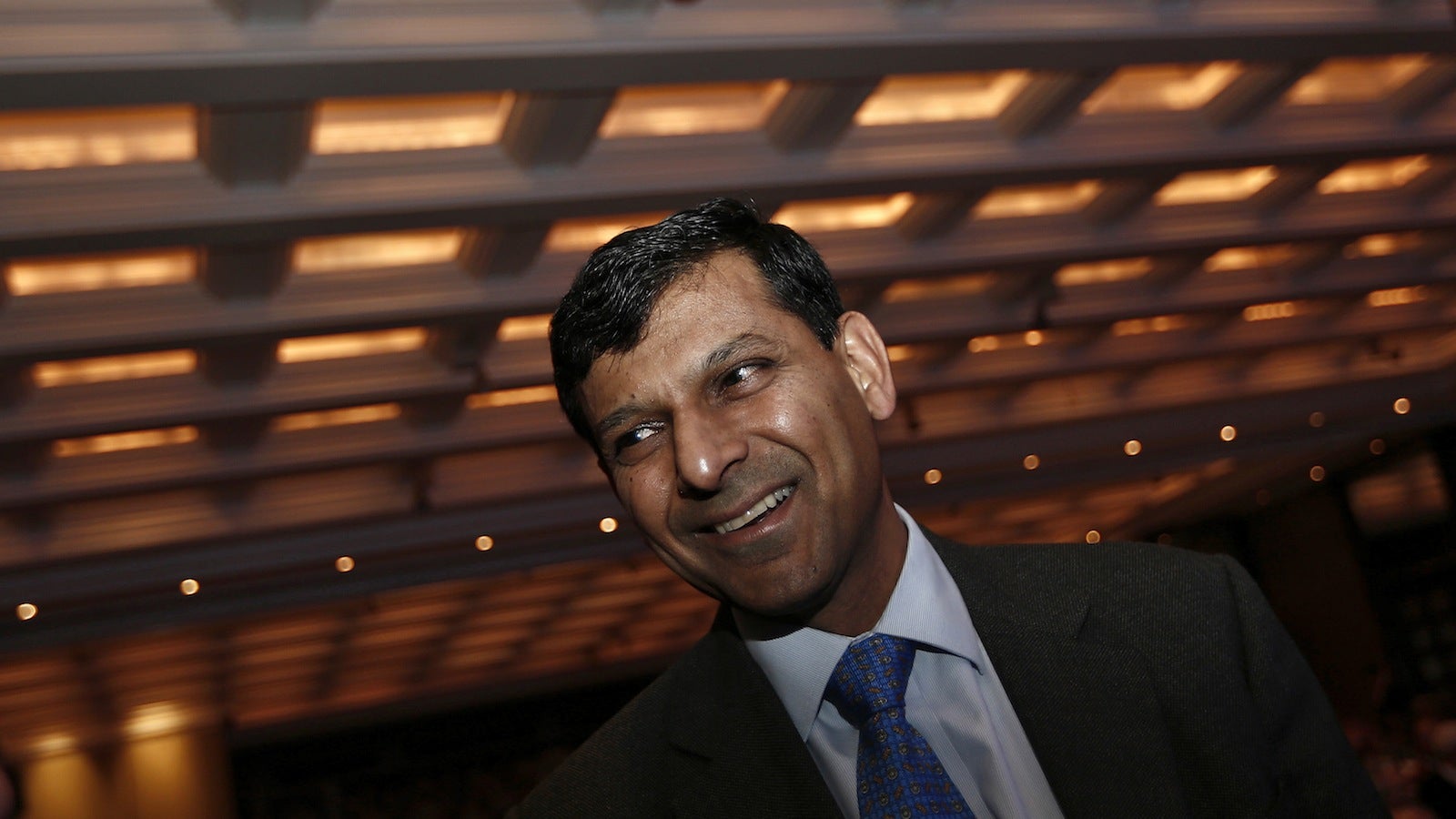Raghuram Rajan’s interest rates cut won’t kickstart India’s economy on its own
After 22 months, India’s central bank has finally decided to cut interest rates by 25 basis points to 7.75%.


After 22 months, India’s central bank has finally decided to cut interest rates by 25 basis points to 7.75%.
The Reserve Bank of India (RBI) had last cut rates in March 2013—and then held its ground to try and contain India’s sticky inflation problem. But as inflationary pressures have eased, the central bank is now more confident about mid-term targets.
“Inflation outcomes have fallen significantly below the 8% targeted by January 2015,” RBI governor Raghuram Rajan said in a statement. “On current policy settings, inflation is likely to be below 6% by January 2016.”
A decline in prices of cereals, fruits and vegetables, alongside a significant fall in commodity prices—particularly crude oil—have helped the RBI rein in inflation in Asia’s third largest economy.
“Crude prices, barring geo-political shocks, are expected to remain low over the year. Weak demand conditions have also moderated inflation excluding food and fuel, especially in the reading for December,” said Rajan, who was recently named the “Governor Of The Year” by a British banking publication.
“Finally, the government has reiterated its commitment to adhering to its fiscal deficit target,” he added.
And although Rajan’s decision to cut the repo rate—the rate at which the RBI lends money to banks—is in line with the finance ministry’s demands and will help revive sentiment further, the central bank’s surprise move won’t make much of a difference by itself.
Here are some reactions, sourced from Reuters and Business Standard.
N R Bhanumurthy, professor at the National Institute of Public Finance and Policy:
I don’t think it will have too much impact because investment is not dependent on interest rates alone.
The banking sector is not ready for revival because they are not well positioned. It is banks’ balance sheets that need to be cleaned up first. We need bank capitalization in the current budget, otherwise business lending will not pick up.
Harsh Mariwala, chairman of consumer goods company Marico:
I see this as a step in the right direction, a signal. But a 25 bps cut may not be enough to spur the investment cycle.
There will have to be more cuts, lending rates have to come down by at least one or two percentage points to get investments going.
Rupa Rege Nitsure, chief economist at Bank of Baroda:
I think this is entirely driven by crude oil prices decline, and also the fact prices across the food basket have also consistently declined for the last five to six months.
In my opinion this is going to help sentiment more rather than actual investment.
And while this rate cut is a signal that the RBI’s monetary stance may finally be shifting—as chief economic advisor Arvind Subramanium also underlined, who said that more easing can be expected—Rajan made clear that the ball is now in the government’s court.
Critical to further easing, the RBI governor said, “would be sustained high quality fiscal consolidation as well as steps to overcome supply constraints and assure availability of key inputs such as power, land, minerals and infrastructure.”
“The latter would be needed to ensure that potential output rises above the projected pick-up in growth in coming quarters so as to contain inflation,” he added.
Over to finance minister Arun Jaitley and the upcoming budget.